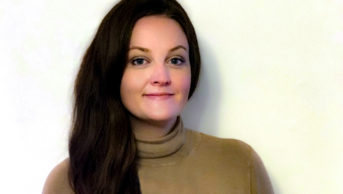
Insight-Visual UK/REX
Sir Michael Rawlins is the newly appointed chairman of the Medicines and Healthcare products Regulatory Agency (MHRA). He is best known as the chairman of the National Institute for Health and Care Excellence (NICE) from 1999 to 2013. He was president of the Royal Society of Medicine from 2012 to 2014. Rawlins is also an honorary professor at the London School of Hygiene and Tropical Medicine, University of London, and emeritus professor at the University of Newcastle upon Tyne.
Are there any changes that could be made to regulatory procedures to help encourage development of new medicines to address unmet medical needs?
We’ve recently introduced the Early Access to Medicines Scheme (EAMS) to make medicines available before marketing authorisation for life-threatening or seriously debilitating conditions with a clear unmet need. Companies can initially apply for the Promising Innovative Medicine (PIM) designation on the basis of early clinical data. At the next stage, the MHRA will consider the evidence and can issue an EAMS scientific opinion to support prescriptions of unlicensed and off-label medicines. Three medicines already have PIM designation.
Through the European Medicines Agency (EMA), companies can now seek conditional approval for a new medicine and convert that to full marketing authorisation when more evidence is available, and the Adaptive Pathways Pilot is encouraging greater dialogue between regulators, industry, health professionals and other stakeholders at an earlier stage of drug development.
On top of all that, the independent Innovative Medicines and Medical Technology Review which we’re calling the “end-to-end review” will look at all stages to see where we can reduce the time it takes for new medicines to come to the market, reduce the costs and thereby reduce the costs ultimately to payers.
What are the barriers to speeding up the drug approval process?
We meet our targets but the targets are quite long. The end-to-end review will be looking at how things can be speeded up both by pharmaceutical companies and at our end. It’s too early to say what the targets should be, we’ll have to see what the external review decides is possible and desirable.
Is there any way to cut the increasing cost of medicines for public health providers?
Everyone recognises we can’t go on as we are. In the old days, a disease like breast cancer used to be one disease, but now it’s ten different diseases with ten different treatments. If it costs £1.2bn to develop a new drug, payers can’t afford to pay that amount of money, the systems just haven’t got it. It’s not just a UK problem, it’s a global problem. The end-to-end review may spark other measures for reducing costs, not just in the UK but in Europe as a whole.
For example, I’m told that about one-third of the direct costs of clinical trials are for contact monitoring — clinical research associates going round every site, every month to check that everything is appropriate. Some trials cost US$100m, US$200m or even US$500m, so that’s a huge sum of money. It’s been proposed to move to risk-based, electronic collection of data without the need for so many site visits, but this would need international agreement.
It’s a delicate balance, and we have to be careful that in getting things done quickly we don’t cut too many corners and efficacy and safety are compromised.
As a former chairman of the National Institute for Health and Care Excellence (NICE), how would you like the MHRA to respond to the European Commission’s recommendation for regulators to work more closely with bodies producing health technology assessments?
In the UK, the MHRA and NICE work closely together on a range of issues, such as the EMA’s Adaptive Pathways project. In addition, companies with products with PIM designation are encouraged to seek joint scientific advice meetings with the MHRA and NICE.
Technology appraisals are pretty straightforward because they are done on products that have already been authorised. It’s in the clinical guidelines where it is helpful for the MHRA and NICE to work together because guidelines aren’t limited to authorised products. For example, around 50% of children’s medicines are not licensed for that purpose, so NICE talks to the MHRA about whether it has any evidence that would urge caution.
However, where cost-effectiveness is concerned, the MHRA and NICE should be completely separate. It wouldn’t be appropriate for us to get involved in discussions about cost-effectiveness.
How is the MHRA working with other regulators to improve the quality of medicines produced at global manufacturing sites?
We have inspectors going to India, China and South America to ensure appropriate quality. We have the largest inspectorate in Europe and we do more inspections on behalf of the EMA than any other competent authority. It doesn’t cost the taxpayer because the manufacturing sites meet the cost of the inspections.
We are also exploring how we can do more mutual recognition so it isn’t necessary for the US Food and Drug Administration and the EMA to go and look at the same manufacturing facilities.
What is the MHRA doing to address drug shortages and is the number of wholesale licences being issued contributing to the problem?
The Department of Health and MHRA actively seek to address shortages, and these may arise due to “upstream” manufacturing or regulatory problems or to “downstream” distribution issues such as parallel exporting. Only a minority of wholesalers and pharmacy contractors are thought to be involved in significant levels of parallel exporting, and preventing export of UK medicines would be contrary to European trade laws. There are currently 2,336 licensed wholesale dealers in the UK and this extensive and varied sector has seemed to protect the UK from supply shortages in the past. Any action to restrict numbers would need to be carefully considered to ensure it didn’t have the unwelcome effect of creating supply problems.
Does the recent switch of diclofenac and domperidone from over-the-counter back to prescription-only indicate a vote of no confidence in pharmacy?
Absolutely not! The decision to make them prescription-only was based on the adverse reaction profile of these medicines. It’s in the public interest to have wider availability of medicines for self-care and to take pressure off primary care and accident and emergency departments, and pharmacists have an important role to play in this. I’m not aware of any steps to halt the general trend for switching from prescription to pharmacy medicines, and I’m also quite keen on the general sale list so that medicines are accessible at sites where there isn’t a pharmacist.
What do you think the future holds for prescription-to-pharmacy medicine switches?
We’ve set up the National Stakeholder Platform on Reclassification of Medicines, and are delighted that Ash Soni, the Royal Pharmaceutical Society (RPS) President, and Ruth Wakeman, head of professional support at the RPS, have joined the platform along with others from Pharmacy Voice [consisting of the Association of Independent Multiple Pharmacies, the Company Chemists’ Association and the National Pharmacy Association]. A challenging work-plan has been developed, and we want to make sure our regulatory role is undertaken from a knowledge base informed by the pharmacy profession.
Separately, the MHRA has established a framework for medicines to be made available without prescription through patient group directions and patient specific directions. Such experience of use within pharmacy will be invaluable in enabling an eventual reclassification to pharmacy status for some new innovative medicines.
How is the MHRA responding to the continuing challenge of counterfeit medicines and patients buying products over the internet?
We have legal powers to interrogate websites and we have a team of specialists who do this. As a result, we’ve closed down more than 3,000 sites in the past two years but they pop up again and it’s a continuing challenge. It’s legitimate to buy drugs from the big pharmacies, via the internet, and we wouldn’t want to stop that. But we are concerned about the guys operating out of their bedrooms and selling counterfeit drugs and that is what we want to put a stop to.
Under the European Falsified Medicines Directive, a common EU logo for registered suppliers of medicines “at a distance” has been agreed and the UK is developing operational arrangements in line with implementation on 1 July 2015.
Once that’s been done, we need a big PR campaign to publicise the risks of buying from crooks.
How does it feel to be back at the MHRA? Has much changed since your days on the Committee of Safety of Medicines?
It’s a bit like coming back home and finding the parents have changed things around and what was your bedroom isn’t any more. There are many people who were here when I left, so it’s lovely to see old friends and make new ones. The biggest changes are that the MHRA now includes devices and it runs the Clinical Practice Research Datalink (CPRD), which is a fantastic primary care database that gives opportunities for looking to see whether signals coming out of the yellow card system are true or not. For example, data from the CPRD show beyond any doubt that there is no association between the measles, mumps and rubella vaccine and autism.


